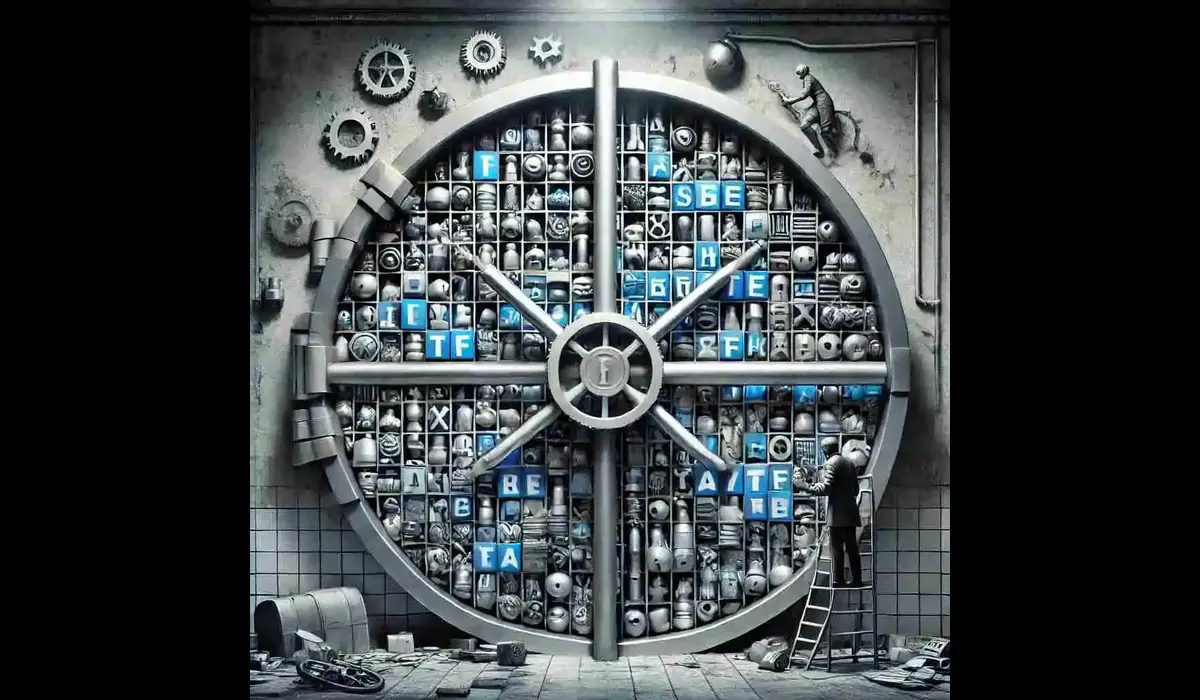The vault opener nyt crossword and Its Cultural Significance
Before delving into the specifics of what makes “Vault Opener” such a curious clue, it is important to first appreciate the broader context in which vault opener nyt crossword operates. The puzzle was first introduced by Arthur Wynne, a British-born journalist, in 1913 in the New York World newspaper. However, it was not until 1942, under the guidance of editor Margaret Farrar, that the New York Times began to regularly feature a crossword. Since then, the NYT Crossword has grown into a cultural touchstone, not just for puzzle enthusiasts, but for linguists, historians, and pop culture aficionados alike.
Today, the crossword puzzle is often seen as a litmus test of cultural literacy. vault opener nyt crossword The puzzles range from relatively simple to fiendishly difficult, with many offering clues that require solvers to be familiar with everything from classical literature to contemporary movies, geography, and even the latest social media trends. Each puzzle represents a blend of art and science, a balancing act of requiring knowledge, lateral thinking, and patience.
Decoding “Vault Opener”
The phrase “Vault Opener” first appeared as a clue in the NYT Crossword on several occasions,vault opener nyt crossword each time under slightly different variations. But at its core, it consistently refers to a specific type of answer—a word or phrase that metaphorically “unlocks” or opens up the solution to a broader set of answers in the grid. Vaults, in this sense, are not just physical storage places, but metaphorical spaces that contain hidden treasures or solutions. In crosswords, the “vault” might represent a category of knowledge or a thematic element that solvers need to access in order to complete the puzzle.
In many cases, the answer to the “Vault Opener” clue is a specific word, phrase, or character known for unlocking or revealing something—be it a famous figure, an object, or a well-known cultural reference. In cryptic crossword puzzles, where clues are often more oblique, the vault opener may be a direct or indirect reference to something capable of “unlocking” other answers.
Common Types of Vault Openers in Crossword Puzzles
While the clue “Vault Opener” could be interpreted in a variety of ways depending on the context, several common types of “openers” frequently appear. These can be broken down into several categories:
1. Famous Figures
In some crosswords, “Vault Opener” vault opener nyt crossword refers to a famous individual known for unlocking or revealing important information. For example, “Edison” could be the answer, referencing Thomas Edison, the famed inventor who unlocked the potential of electricity. Similarly, “Einstein” might serve as a vault opener, symbolizing his ability to unlock the mysteries of physics. Other figures might include legendary historical characters or even fictional detectives or adventurers, all known for solving mysteries or revealing hidden truths.
2. Objects or Tools
Another interpretation of a “Vault Opener” could be a literal object or tool used to open a vault or container. For example, “key” or “combination” might be answers to a vault opener clue, representing the physical objects required to open a safe. In some cases, the clue might be referring to an object known for unlocking hidden potential, such as a “password” or a “code,” which are often used to access digital vaults in the modern world.
3. Literary and Pop Culture References
In the world of vault opener nyt crossword, pop culture references are a frequent occurrence. Vault openers may refer to characters from literature or movies known for unlocking secrets or discovering hidden treasures. A clue might read “Vault Opener: [character’s name],” where the character is known for unearthing hidden gems—whether literal, like Indiana Jones finding ancient relics, or metaphorical, like Sherlock Holmes unlocking the truth behind a crime. Characters like “Lara Croft,” the adventurer from Tomb Raider, or “Jack Sparrow” from Pirates of the Caribbean, might appear as possible answers to such clues.
4. Concepts or Abstract Ideas
In some cases, the vault opener nyt crossword could represent a concept or abstract idea. Words like “truth,” “insight,” or “revelation” may be answers to these kinds of clues. Such answers would metaphorically imply the unlocking of a deeper understanding or a profound realization. These clues tap into the more philosophical side of puzzle construction, where answers require solvers to think beyond the literal and into the conceptual.
How Vault Openers Affect the Puzzle Solving Process
The inclusion of a vault opener clue in the crossword puzzle can significantly impact the overall solving process. It serves a few purposes in both the construction of the puzzle and the experience of solving it:
1. Providing Thematic Direction
vault opener nyt crossword s are themed, meaning that the answers to certain clues follow a specific pattern or concept. Vault openers often function as key thematic elements that help unlock the theme of the entire puzzle. A single vault opener clue can offer solvers the critical hint they need to identify the overall theme of the crossword, which in turn can guide their approach to solving the other clues.
2. Unlocking Additional Answers
In puzzles that are particularly tricky, vault openers might provide an “aha” moment that makes it easier for solvers to complete the rest of the grid. A clever vault opener could create a ripple effect, allowing solvers to fill in several other answers with newfound confidence. This effect is especially common in puzzles with interlocking answers, where solving one clue can often help with others.
3. Playing with Puzzle Structure
From a construction perspective, vault openers introduce an additional layer of complexity to the puzzle. For puzzle constructors, creating a vault opener clue requires not only knowledge of language but also a deep understanding of crossword solvers’ tendencies. The best vault opener clues are those that are sufficiently challenging yet not impossible to solve. They might require solvers to think outside the box or make creative associations between different sets of knowledge.
Vault Openers and Puzzle Solvers: The Experience of the “Unlocking Moment”
For solvers, encountering a “vault opener nyt crossword” clue is often a moment of satisfaction. It’s akin to finding the key that opens a door to an entirely new set of answers. The feeling of unlocking a challenging section of the crossword can be deeply rewarding, as it signifies the solver’s ability to think both laterally and critically. As with many aspects of the NYT Crossword, the process of solving a vault opener clue requires a blend of perseverance, insight, and sometimes even a bit of luck.
Solvers may find themselves revisiting the vault opener clue after filling in several other answers, recognizing its importance in the puzzle’s broader structure. If they’re stuck, revisiting this clue can provide just the nudge needed to break through a mental block. Experienced solvers often develop strategies to identify these pivotal clues early on, using them as anchors to help solve the rest of the puzzle.
Conclusion: The Enduring Mystery of the Vault Opener
In the context of the vault opener nyt crossword a, the “Vault Opener” serves as both a literal and metaphorical key to solving the puzzle. Whether it refers to a historical figure, a tool, a literary reference, or an abstract concept, the vault opener is a reminder of the puzzle’s ultimate purpose: to challenge the solver, to engage the intellect, and to offer moments of epiphany and satisfaction.
For the seasoned solver, the vault opener is a symbol of the intellectual journey that every crossword puzzle presents. It is a gateway to discovery, a reminder that even the most intricate problems can be solved with persistence, insight, and creativity. As long as the New York Times Crossword continues to evolve, the vault opener will remain a crucial part of the puzzle-solving experience—unlocking new challenges, ideas, and discoveries for generations of solvers to come.










